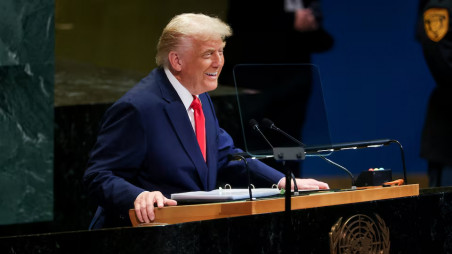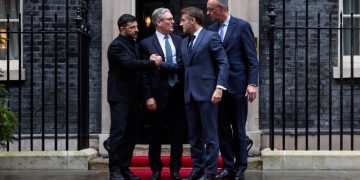After showing admirable and decisive toughness in defusing the crisis in the Middle East, US President Donald Trump has been going back and forth when it comes to dealing with the Russia-Ukraine conflict. For some time, he has been saying that he wants to see the war Russia imposed on Ukraine come to an end. But to achieve it, the US President needs to show firm resolve, the way he did in reining in Israel and browbeating Hamas into abjuring violence. However, his tough resolve dissolves when it comes to dealing with Russian President Vladimir Putin.
This is disappointing since Trump had acknowledged the futility of the Anchorage Summit held in August in Alaska, where he virtually rolled out the red carpet to the Kremlin leader without obtaining anything in return. Again, Trump threatened October 13 to supply Tomahawk cruise missiles to Kyiv if Putin did not end his aggression. The message sent was that the US president was determined to confront a leader who understands tough language. But all his resolve to take on Putin seemed to wilt following a lengthy phone call with him October 16. Reports indicate Putin managed to regain the upper hand during that conversation. He dangled the prospect of another meeting at a different place. The venue – Hungary – does not cause any surprise since this is a country ruled by his friend and follower Prime Minister Viktor Orban, on whom he can count for support.
What happened the following day is even worse. For, while receiving the Ukrainian President at the White House October 17, Trump simply reneged on his promise to supply the cruise missiles to Ukraine, citing insufficient US stockpiles and a desire to avoid “escalation.” Such behaviour appears shocking when one considers the fact that Putin showed no such hesitation in the weeks following the Anchorage Summit and unleashed unprecedented bombardments on Ukraine’s cities and civilian infrastructure.
At that time, Trump resorted to equivocation and declared on his social media platform that “it is time to stop the killing and make a DEAL.” He thus tried to adopt a position of maintaining equidistance between the two warring countries, which effectively put the aggressor and the victim on the same level. The fallout has been a policy paralysis for more than eight months, and Russia has continually exploited the situation. Ukraine’s President Volodymyr Zelenskyy visited the White House last time in a less hostile atmosphere than during his February visit and urged friendly countries to put pressure on Putin as the only way to bring peace to Ukraine. The promise of providing the Tomahawk missiles was hailed by Ukraine and its European allies as an attempt to mount pressure on Russia. These weapons are much needed for Ukraine’s arsenal. Adding to this military pressure, Trump used the threats of sanctions since returning to the White House. But he has not followed through with these threats. He had heaped insults on Zelenskyy during their tense February meeting in the Oval Office, when he had admonished his Ukrainian counterpart, saying among other things that he did not “hold the cards.”
Trump uses the metaphor of cards too often, in keeping with his image of being a transactional President for whom the presidency appears to be nothing more than deal-making. He is now expected to play his own cards well and get tangible results for the Russia-Ukraine conflict the way he has opened the doors for peace in the Arab world.






































